What do dolphins and whales eat in the wild
Marine mammals are a diverse group of creatures, and just like land mammals, their diets vary depending on their species, habitat, and hunting strategies. From the sleek and playful dolphins to the massive, deep-diving sperm whales, each marine mammal has its own unique taste in food. But one thing they all have in common? They all play important roles in their ecosystems.
Let’s dive into the diets of some whales and dolphins.
Dolphins: The Agile Hunters of the Sea
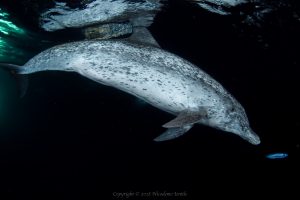
Atlantic spotted dolphin chasing prey at night in the Bahamas. photo by Nicodemo Ientile.
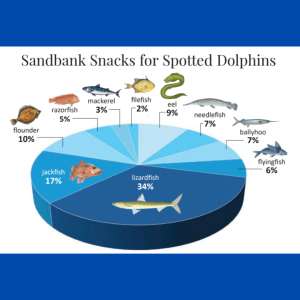
Strand-feeding is a unique hunting technique used by bottlenose dolphins, where they swim onto shallow shores to herd and capture fish like mullet. This behavior involves the dolphins using the shoreline to trap their prey, and is a highly effective method, though it requires precise timing and coordination among the group. It’s a learned behavior, passed down through generations, and is most commonly observed in regions with shallow, fish-rich waters. (Watch a BBC video clip here).
In Western Australia, bottlenose dolphins will battle a more aggressive prey — the Maori octopus— which could kill the dolphins if not incapacitated properly before eating. The dolphins use two main tactics to catch octopuses. One method involves holding the octopus in their mouths, swimming out of the water, and then slamming back down to break apart the octopus’ body. The other tactic is to shake their head side to side and toss the octopus, creating a similar slamming effect. It might take some extra effort, but the reward is a high-protein meal. (Read more here).
Orcas (Killer Whales): Apex Predators
Diet: Fish, Squid, Seals, Sea Birds, and Even Whales!
Orcas, or killer whales, are the top predators in the ocean. They have a varied diet that depends on the pod’s location and hunting strategies, and they are known to eat almost anything. Some orcas are fish-eaters, while others hunt marine mammals like porpoises and seals, as well as sea birds, and even great white sharks.
For example, resident orcas primarily feed on fish, particularly salmon. Their range includes central California to southeast Alaska, but their core range is in the coastal waters of Washington and southern Vancouver Island, and the Salish Sea. In contrast, transient orcas, which are often found in open ocean areas (coastal and offshore waters of the Pacific Northwest, from southern Alaska to central California) specialize in hunting larger prey, such as seals, sea lions, and even young whales.
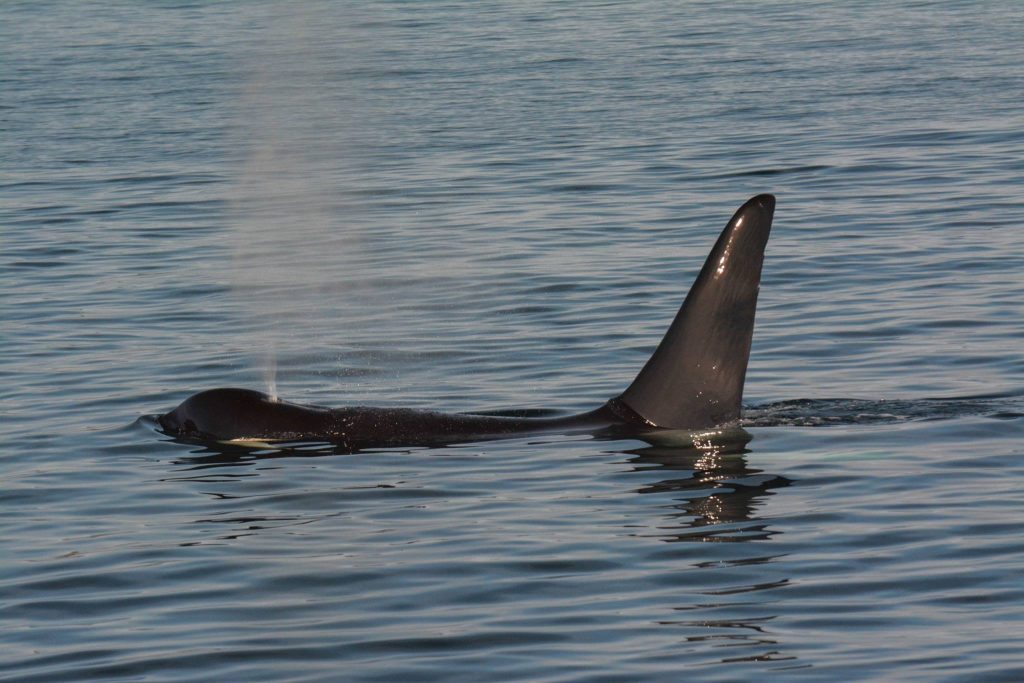
Off the coast of South Africa, orcas have learned to hunt and kill great white sharks in under two minutes—faster than their typical group hunts. This rapid predation has caused great white sharks to flee the area, leading to significant changes in the underwater ecosystem.
In recent news, a pod of orcas off the coast of Mexico has developed a clever strategy to hunt and kill whale sharks, the world’s largest fish, which can grow up to 60 feet long. While previous reports suggested orcas targeted whale sharks, new research has documented this behavior in detail for the first time, capturing four separate hunting events on camera. (Read here).
Sperm Whales: Deep Divers with a Taste for Squid
Diet: Squid (especially Giant Squid), Fish, and Octopus
Sperm whales are the largest toothed whales, and their diet is largely centered around squid, particularly the elusive giant squid that lives in the deep ocean. They are found in all deep oceans, from the equator to the edge of the pack ice in the Arctic and Antarctic. According to NOAA, “sperm whales hunt for food during deep dives that routinely reach depths of 2,000 feet and can last for 45 minutes. They are capable of diving to depths of over 10,000 feet for over 60 minutes.”
Their hunting technique involves diving deep into the ocean, where they rely on echolocation to locate squid in the dark depths. Once they locate their prey, sperm whales use their powerful jaws to capture and swallow their meals whole. The giant squid, which are known to put up a fight, leave scars found on the sperm whale’s skin.
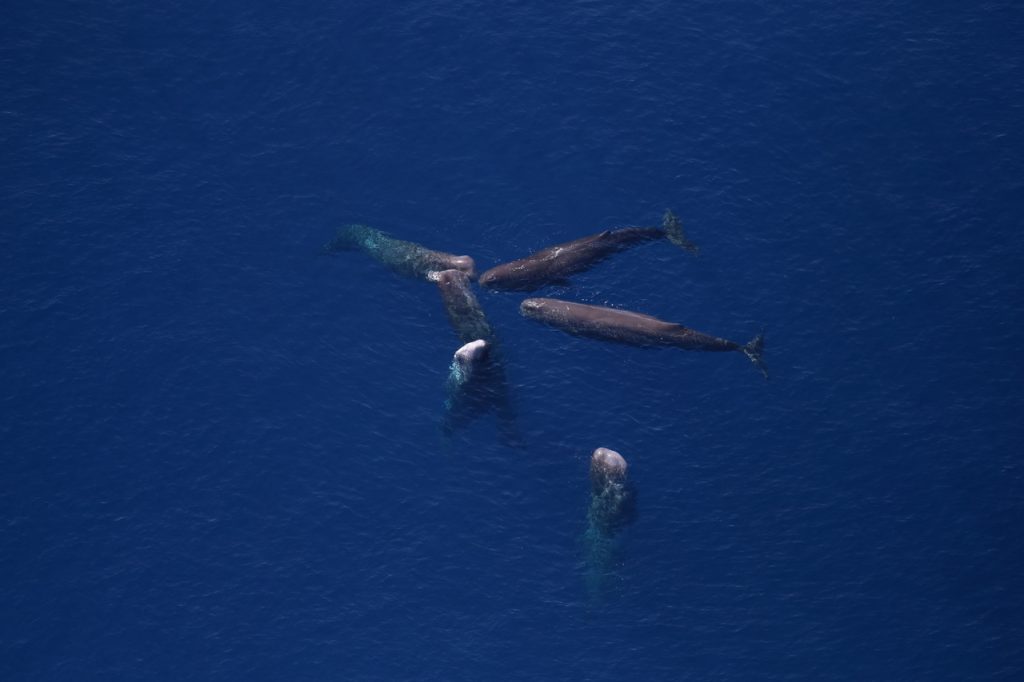
River Dolphins: The Freshwater Hunters
Diet: Fish, Crustaceans, and Occasionally Snakes
River dolphins, such as the Amazon river dolphin (also known as boto) and the Indus river dolphin of India, are adapted to living in freshwater rivers rather than the open ocean. Their diet primarily consists of freshwater fish, which can vary greatly depending on their habitat. These dolphins are opportunistic feeders and will eat anything they can catch, including smaller fish, crustaceans, and even the occasional freshwater snake.
One of the most notable traits of river dolphins is their ability to navigate through narrow, often murky waters. They have longer beaks and more flexible necks than oceanic dolphins, allowing them to maneuver through tight spaces and hunt for fish hiding in underwater vegetation or along riverbanks.
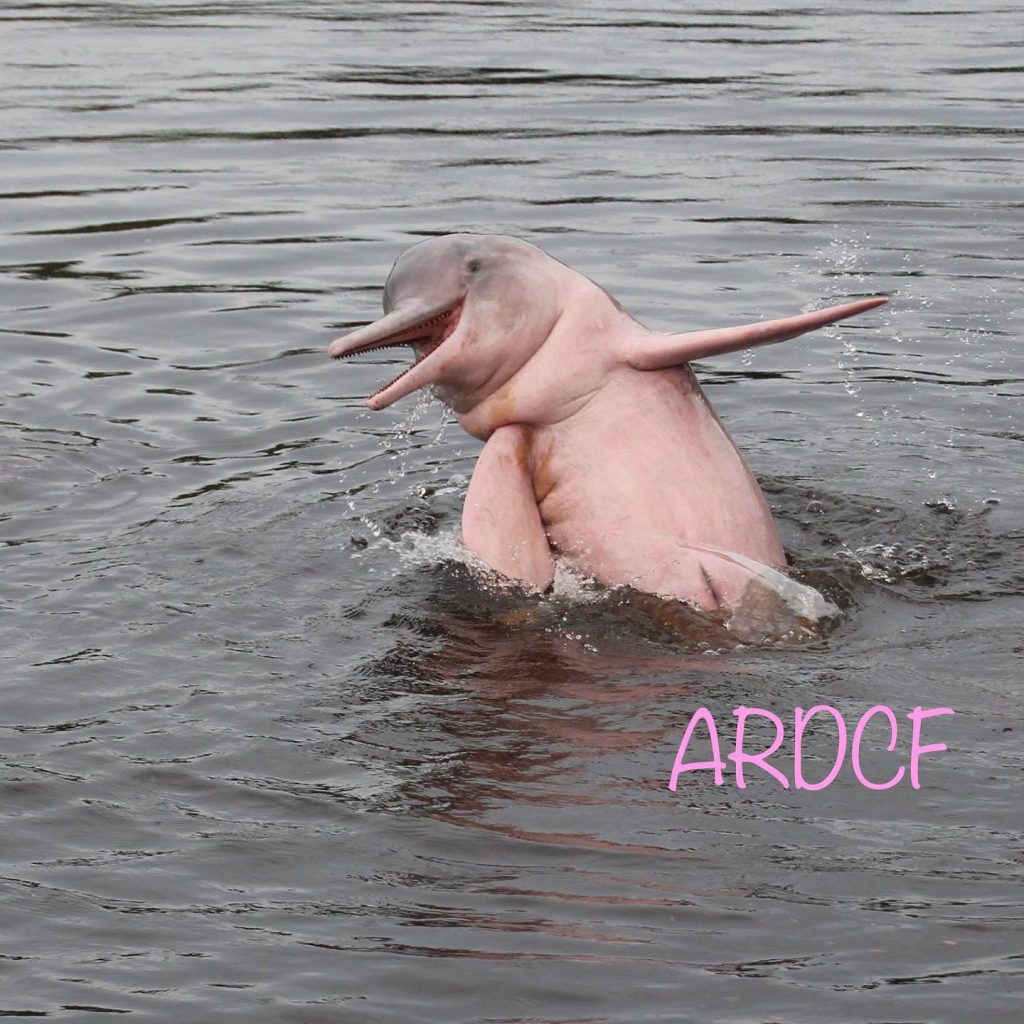
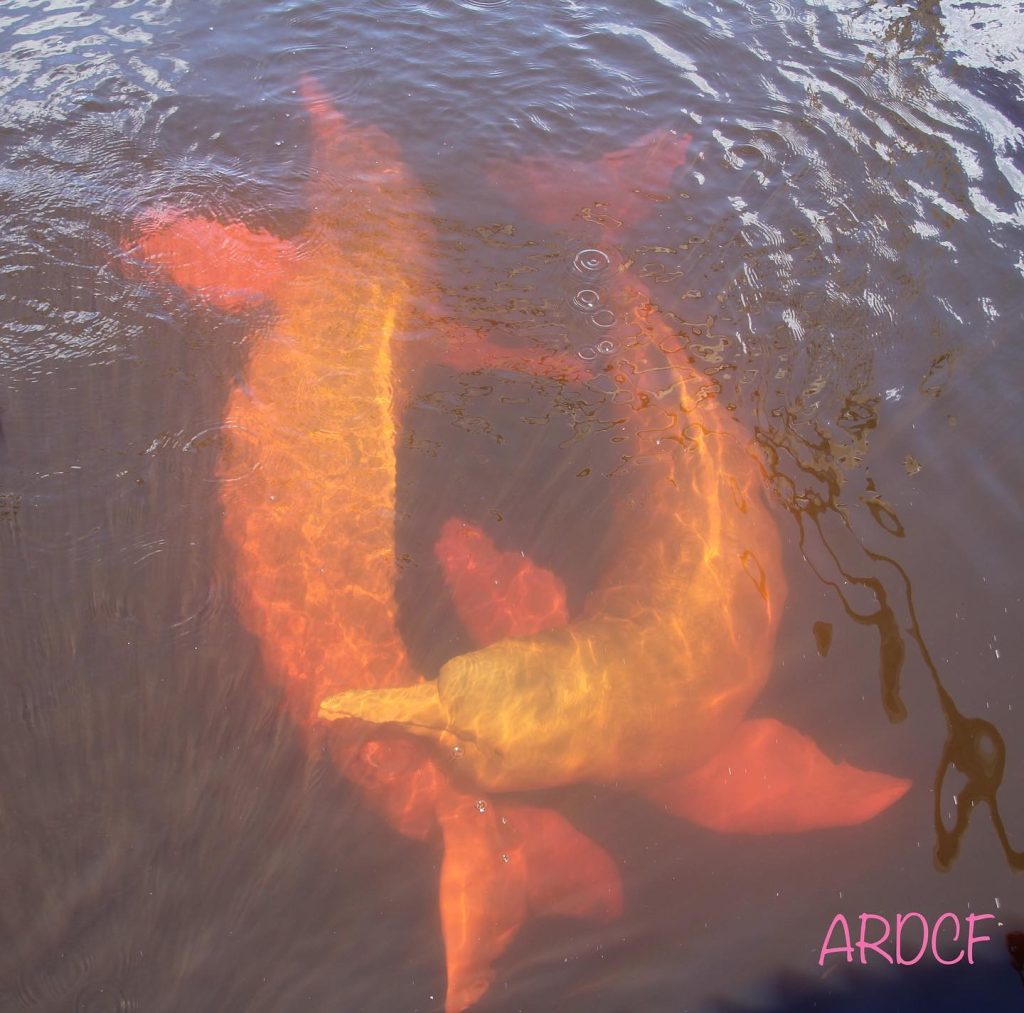
“The boto is an endangered species and we need to protect them before they are lost forever.” — Suzanne Smith, founder and director of ARDCF.
Read more about river dolphins in a former WDP blog here
Baleen Whales: A Filter-Feeding Diet
Baleen whales are filter feeders, meaning they use their baleen plates—comb-like structures in their mouths—to filter food from the water. Their diet primarily consists of tiny organisms found in the ocean, which they capture by taking in large gulps of water and then expelling it, leaving food trapped in the baleen.
- Krill – These small, shrimp-like creatures are the primary food source for many baleen whales, particularly blue whales and humpback whales.
- Plankton – Includes both phytoplankton (microscopic plants) and zooplankton (small animals), which are abundant in nutrient-rich waters.
- Small Fish – Some baleen whales, like gray whales, feed on small schooling fish, such as herring or sardines.
- Other Tiny Marine Life – Some baleen species also feed on other tiny creatures like copepods, which are a type of small crustacean.
Baleen whales are known to consume massive quantities of food to fuel their enormous bodies. For example, in the North Pacific a blue whale can eat up to 10 to 20 tons of krill per day during feeding season! (Read more here).
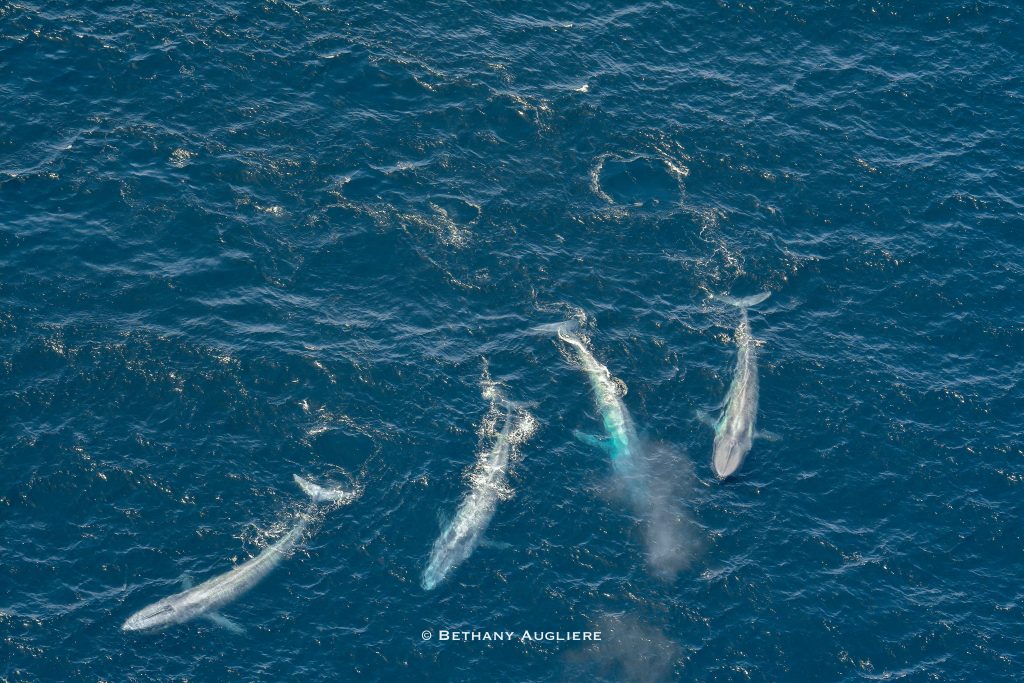
Watch video footage here.
Bubble net feeding is a remarkable and cooperative hunting technique used by humpback whales to catch large quantities of fish, particularly in deep, dense schools. This strategy involves a team of humpback whales working together to corral and trap prey using bubbles and coordination. (Read more about this here).
Gray whales are the only baleen whales that primarily feed on the ocean floor. They scoop up sediment by scraping the side of their head along the seabed, capturing small invertebrates on their baleen plates. The sediment and other particles are then filtered out through the fringes of the baleen
Dolphins and whales have evolved a variety of specialized feeding strategies that reflect their intelligence, adaptability, and the diverse ecosystems they inhabit. From the intricate bubble-net feeding of humpback whales to the cooperative hunting techniques of dolphins, these marine mammals demonstrate impressive skills in securing their food.
